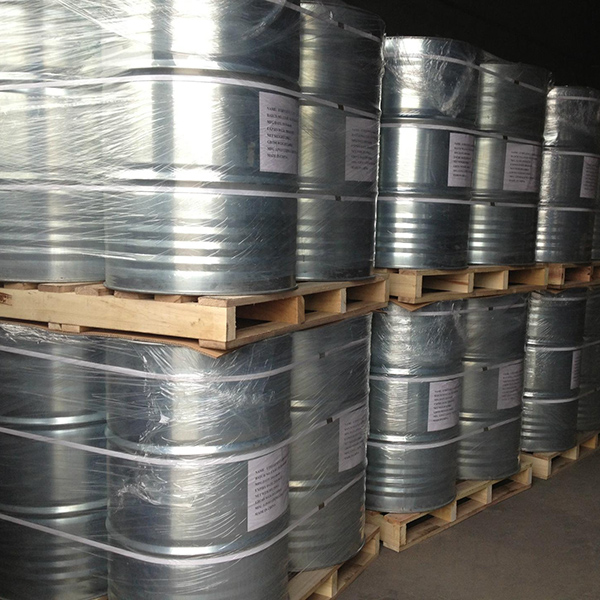Allylamine is a class of high-efficiency, low-toxicity antifungal drugs derived from heterocyclic spironaphthalene. Its antifungal spectrum includes Aspergillus, Candida and Schenck spore hyphae. Since Georgopoulos et al. discovered that naftifine has high broad-spectrum antifungal activity in 1981, the antifungal research of this class of compounds has made rapid progress, and has developed into a class of highly active antifungal new structural compounds. The compounds currently on the market or under study are naftifine, terbinafine, butenafine, SDZ-87-46g, tolnaftate, etc. Among them, naftifine, terbinafine, butenafine are already in the market. They are successively marketed at home and abroad. With the continuous in-depth research of these compounds, more allylamine derivative antifungal drugs will continue to be used in clinical practice.

Mechanism of action
Allylamine antifungal drugs block the synthesis of ergosterol in fungal cells by inhibiting fungal squalene epoxidase (SE), thereby destroying the production of cell membranes. The difference in the amino acid sequence of SE in fungi and mammals may be the molecular basis for the selectivity of allylamine antifungal drugs. The side chain part of the drug structure binds to the lipophilic site of SE, resulting in a conformational change of SE and inactivation, thereby causing the accumulation of squalene and the lack of ergosterol. The accumulation of squalene increases the permeability of the cell membrane, leading to fungal cell death.
safety
Since most skin fungal infections do not affect life, the safety of therapeutic drugs is a very important issue. The safety of drugs depends on two points: one is the adverse reaction of the drug itself; the other is the risk of drug interaction. Allylamine compounds mainly act on the squalene cyclase of fungal cells and do not inhibit the cytochrome P450 enzyme. Therefore, oral administration has the following characteristics: low liver toxicity, no effect on endocrine, no effect on the metabolism of other drugs, and rare adverse reactions .
Leakage emergency treatment
Protective measures, protective equipment and emergency handling procedures for operators: it is recommended that emergency handling personnel wear air breathing apparatus, anti-static clothing and rubber oil resistant gloves. Do not touch or cross the leakage. All equipment used in operation shall be grounded. Cut off the leakage source as much as possible. Eliminate all ignition sources. According to the influence area of liquid flow, steam or dust diffusion, the warning area shall be delimited, and irrelevant personnel shall evacuate from crosswind and upwind to the safety area.
Environmental protection measures: take in the leakage to avoid polluting the environment. Prevent leakage from entering sewers, surface water and groundwater. Storage and removal methods of leaked chemicals and disposal materials used:
Small amount of leakage: collect the leakage liquid in airtight container as far as possible. Absorb with sand, activated carbon or other inert materials and transfer to a safe place. Do not flush into the sewer.
Large amount of leakage: build dike or dig pit to take in. Close the drain pipe. Foam is used to cover evaporation. Transfer to tank car or special collector with explosion-proof pump, recycle or transport to waste treatment site for disposal.
Storage precautions: Store in a cool and ventilated warehouse. Keep away from fire and heat sources. The storage temperature should not exceed 29 ℃. The package should be sealed and not contact with air. It should be stored separately from oxidants, acids and edible chemicals, and should not be mixed. Explosion proof lighting and ventilation facilities are adopted. It is forbidden to use mechanical equipment and tools that are easy to produce sparks. The storage area shall be equipped with leakage emergency treatment equipment and appropriate materials.
Operation precautions: operators should be specially trained and strictly abide by the operating procedures. The operation and disposal should be carried out in the place with local ventilation or general ventilation facilities. Avoid contact with eyes and skin, avoid inhalation of steam. Keep away from fire and heat source. No smoking in the workplace. Use explosion-proof ventilation system and equipment. If Canning is needed, the flow rate should be controlled and the grounding device should be provided to prevent the accumulation of static electricity. Avoid contact with prohibited compounds such as oxidants. When carrying, it should be loaded and unloaded lightly to prevent the package and container from being damaged. Empty containers may contain harmful substances. Wash hands after use, and do not eat in the workplace. Fire fighting equipment and leakage emergency treatment equipment of corresponding variety and quantity shall be provided
Post time: Apr-19-2021

